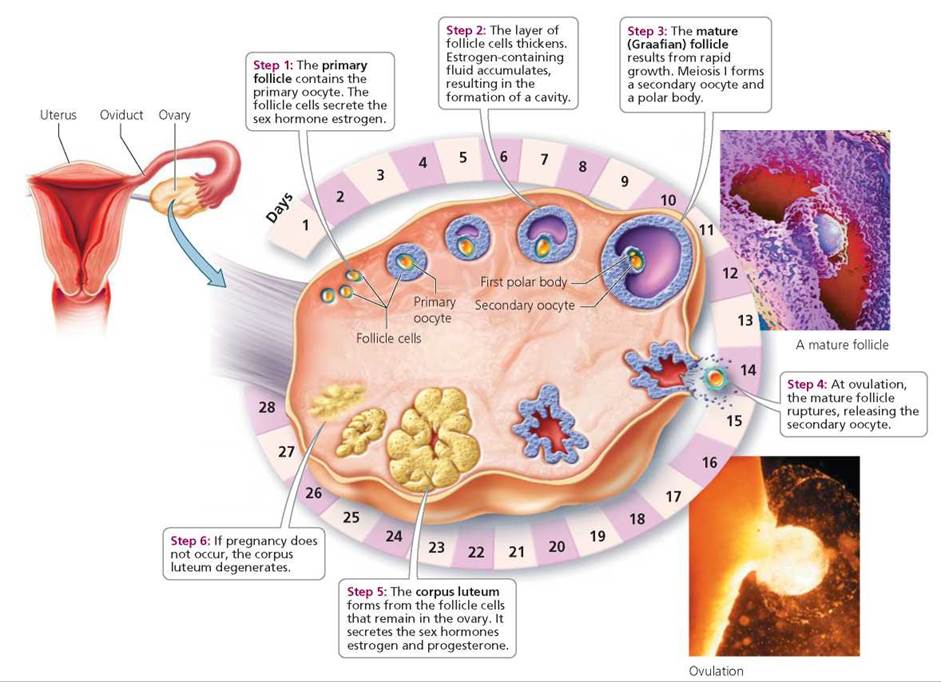
Ovulation is when a mature egg is released from the ovary and makes it way through the fallopian tube in anticipation of fertilization. Hormones have already prepared the lining of the uterus for the potential pregnancy. If pregnancy does not occur, the egg and the lining of the uterus are expelled through menstruation and the ovulation process occurs again.
Important Ovulation Facts
The egg lives 12-24 hours after leaving the ovary
Typically only one egg is released during ovulation, but more than one can occur and if fertilized results in twins, triplets or higher, although the latter are more rare
Ovulation can be negatively affected by illness, weight, medications, and stress
Some women experience pain (known as mittelschmerz or “middle pain” in German) or light spotting during ovulation
Each woman is born with all the eggs she will ever have and as she ages the quality and quantity diminish
Ovulation can occur even if the menstrual cycle has not occurred
A woman’s monthly cycle is measured from the first day of her menstrual period until the first day of her next period. On average, a woman’s cycle is between 28 to 32 days
Hormones: The Secret Ingredient
The follicular phase is the first part of the ovulation cycle. This phase starts the first day of the last menstrual period (LMP) and continues to ovulation. This first half can differ from woman to woman lasting anywhere from 7 days to 30 days.
The luteal phase is the second, and probably the most important half of ovulation cycles. The luteal phase is typically only 12-16 days from the day of ovulation. This means that the day of ovulation will determine how long a woman’s cycle is. While stress can affect the menstrual cycle, stress around the time of the expected period will not make it last as one’s period was already determined weeks earlier!
